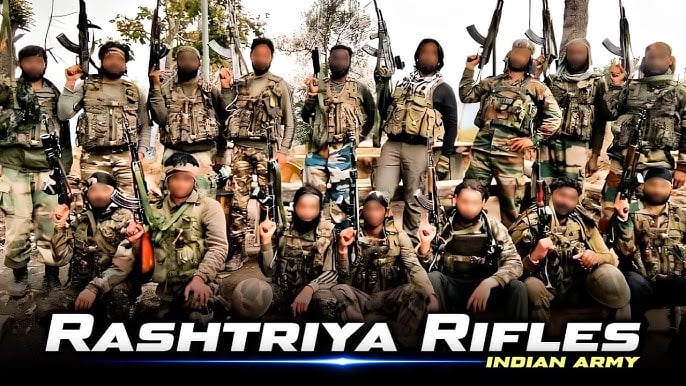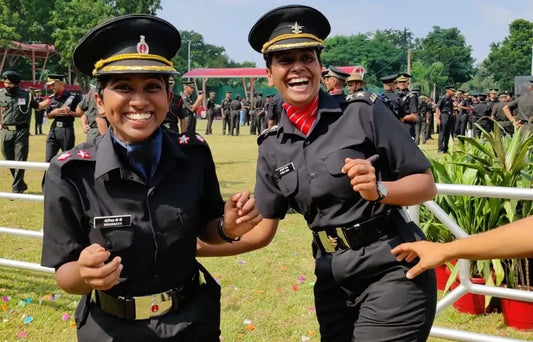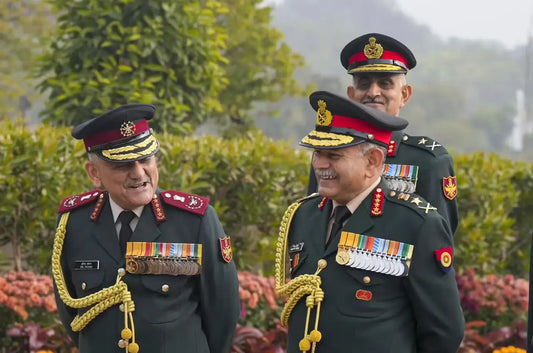Rashtriya Rifles: An In-depth Analysis of Its Role, Evolution, and Impact on India's Security

The Rashtriya Rifles (RR) is a key component of India's internal security, established in 1990 to address insurgency and terrorism, particularly in Jammu and Kashmir. As a specialized counter-insurgency unit of the Indian Army, the RR operates under the Ministry of Defence, upholding peace and stability in conflict-affected regions. Its development reflects India's proactive approach to safeguarding territorial integrity and highlights the complex socio-political dynamics of internal strife.
Historical Context
The rise of insurgency in northern India during the late 20th century significantly impacted the country's security landscape, particularly in Jammu and Kashmir. The Rashtriya Rifles was formed in response to increasing violence and unrest from groups challenging state authority. Officially established on October 1, 1990, it was led by General S. F. Rodrigues, with Lieutenant General P. C. Mankotia as its first Director General. This strategic move recognized the need for a specialized force trained for counter-insurgency operations.
Initially, the RR comprised about 75,000 troops from the regular Army on deputation, with early deployments consisting of six battalions—three in Punjab and three in Jammu and Kashmir—to address immediate threats. By 1994, the RR had expanded to 36 battalions exclusively operating in Jammu and Kashmir, emphasizing its critical role in national security.
Structure and Organization
Currently, the Rashtriya Rifles consists of 65 battalions organized into five Counter Insurgency Forces (CIFs), each led by a Major General, covering the Kashmir Valley and Jammu division. The major CIFs are Victor Force, Kilo Force (under XV Corps), Delta Force, Romeo Force (under XVI Corps), and Uniform Force (a later creation). Each battalion maintains full manpower strength and undergoes rigorous training, including an eight-week counter-insurgency school focusing on specialized tactics for hostile environments. This organization enhances operational effectiveness and fosters inter-unit cohesion among soldiers from various infantry regiments.
Roles and Powers
The Rashtriya Rifles' primary role is conducting counter-insurgency operations to neutralize militant threats and restore law and order in conflict zones. Operating under the Armed Forces (Jammu and Kashmir) Special Powers Act, 1990 (AFSPA), the RR has the legal authority to engage in military actions beyond civilian capability. Their operations involve military engagements with insurgents, coordination with local police and intelligence agencies, and civic assistance programs aimed at fostering regional security and communal harmony.
Recently, discussions have emerged about deploying RR battalions to other insurgency-affected states like Chhattisgarh, Jharkhand, Maharashtra, and addressing security concerns in northeastern areas bordering China.
Equipment and Capabilities
The Rashtriya Rifles' operational capability is supported by advanced equipment and training. Units are equipped with modern small arms and ammunition, bullet-proof jackets and protective gear, and specialized communication equipment for real-time coordination. The diverse regimental backgrounds of RR personnel contribute varied skills and experiences, enhancing the force's collective capacity. Their training sharpens tactical skills and fosters a shared understanding of challenges in insurgency-affected areas.
Motto and Ethos
The motto of the Rashtriya Rifles, "Dridhta Aur Veerta" (Determination and Valour), encapsulates the spirit of this elite formation. Volunteers from different Indian Army units are selected based on capability and motivation to undertake demanding counter-insurgency tasks, emphasizing commitment, discipline, and ethical conduct in challenging missions.
Statistical Data and Research Insights
The Rashtriya Rifles has significantly impacted conflict management and counter-terrorism. Since its inception, it has engaged in numerous operations in Jammu and Kashmir, resulting in the apprehension or neutralization of many insurgents and facilitating peacebuilding initiatives. Reports indicate that RR deployment correlates with a decline in militant activities in specific districts. For instance, Kilo Force areas reported over a 30% reduction in violence incidents in the past decade due to systematic RR operations.
Challenges and Solutions
Despite its successes, the Rashtriya Rifles faces challenges such as human rights issues, with operations under AFSPA sometimes drawing allegations of rights violations, requiring accountability and oversight. Local perceptions of military presence in civilian areas can also complicate efforts. Solutions may include community engagement to build trust, robust human rights training, and strengthened collaboration with civil authorities to promote security and socio-development programs.
Future Trends and Predictions
Looking ahead, the Rashtriya Rifles may undergo significant changes in response to India's evolving security landscape. Factors like technological advancements, operational scope expansion, and increased inter-agency coordination could redefine RR operations. The use of surveillance drones, intelligence-gathering tech, and enhanced cooperation with local police and intelligence agencies could become paramount.
Conclusion
The Rashtriya Rifles remain pivotal in India's internal security, addressing insurgency and terrorism challenges in Jammu and Kashmir. Its formation represents a critical chapter in India's strategy for maintaining peace and stability in volatile regions. As the RR continues to evolve, it will likely influence both the security framework of J&K and India's broader internal security strategy. Platforms like SSBCrack and SSBCrackExams provide invaluable resources for those aspiring to join India's armed forces. Acknowledging RR's contributions requires balancing operational effectiveness with the moral obligations tied to such influential roles in security.



















